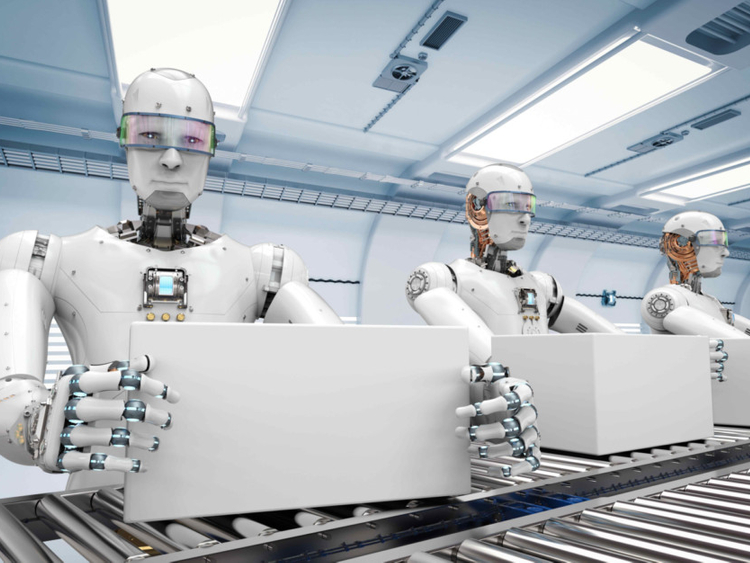
When we talk about artificial intelligence (AI), we tend to think of smart robots doing advanced things on their own, perhaps in dangerous ways, now or in the future. We do not tend to think of Google translation, Amazon book recommendations or Netflix movie suggestions, scan-to-text software, digital personal assistants (managing to-do lists, online orders, and reminders, finding info online, etc), and other such applications of AI that are fast becoming part of our everyday lives.
A couple of weeks ago I attended a debate about AI at the Innovation and Research Summit in Amman, Jordan; the question on the table was whether AI represents a clear and imminent danger to humanity. The four debaters mentioned a variety of applications and potential problems, focusing mainly on the threat to jobs that humans perform today but smart robots will most likely take over — for a fraction of the costs. The role and impact of AI in education was not mentioned at all.
A recent report from eSchool News stated that the use of AI in the US education sector will grow by 47.5 per cent between 2017 and 2021. This trend will affect all school levels, from kindergarten to college, introducing new personalised and rich educational methods that will dramatically transform students’ learning experience.
The personalisation of the learning experience is indeed the first great ongoing transformation of the educational system. There are already several smart tutoring systems, such as Carnegie Learning, that follow each kid’s ability in specific subjects and skills and then tailor the content level and exercises to optimise the efficiency of learning. I remember when I was learning to type, the software gradually made the practice harder as my typing speed and accuracy increased. The new, intelligent systems are similar but much more advanced, as the smart software continuously gauges the learner’s comprehension and ability in complex subjects. These intelligent systems are still in their early stages, but within a few years, they will be quite advanced and powerful and will quickly spread through all educational systems worldwide.
Another important transformation is how the teachers are becoming able to optimise both the preparation of their educational material and the grading of students’ homework, tests and essays.
Software such as Cram101 uses AI to take content from textbooks and translate them into outlines, chapter summaries, study guides, practice tests and cards. Other systems such as Netex Learning help teachers and lecturers produce digital content for various devices, including video. And PowerPoint plug-ins such as Presentation Translator can produce subtitles in real time for what the lecturer is saying, thus allowing millions of students around the world to benefit from top-notch lectures given in a language they do not master.
Grading is another area that is both time consuming and stressful for teachers. AI is already helping with the plagiarism checkers that have existed for over a decade now and which, through machine learning, have become more and more accurate in detecting cheating. In fact, there are now intelligent programmes, such as ‘Emma’, that can attribute authorship from a database of writing styles: give it enough writing samples from thousand students, and it will tell you who wrote the piece you feed it next.
Software that grade multiple-choice questions have existed for many years now and programs that can read and assess fill-in-the-blank questions now also exist. Other software, such as Gradescope, can grade students’ papers by “understanding” what types of questions are being asked, assess the student’s answers, and even recognise handwriting. Gradescope claims to save teachers up to 90 per cent of their grading time! Even experimental and “hands-on” activities are being impacted by AI by way of Virtual Reality, or ‘augmented reality’, which is now being integrated in smart devices. Such ‘immersive technology’ will allow students to perform experiments and field trips without leaving the classroom, the library or their homes.
This wide impact of AI is why people feel threatened by it: they are afraid of losing jobs that until recently seemed too complex for machines to do well enough to take over from humans. We now know that intelligent machines/programs can replace humans on any task that can be automated, but it remains to be seen whether they can have the ‘human touch’ in such fields as teaching. For now and the near future, teachers will still have an important role to play in education, although they can be assisted by machines and software that can relieve them of tedious tasks.
AI in education appears to be a win-win situation: students benefit from personalised teaching, educators get to focus on truly pedagogical tasks rather than mind-numbing and stressful ones, and the entire system becomes more efficient. The roles and competencies of teachers, however, will need to be redesigned.
Nidhal Guessoum is a professor of physics and astronomy at the American University of Sharjah. Twitter: @NidhalGuessoum










